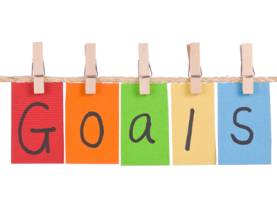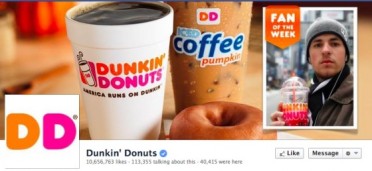Are you a marketer or entrepreneur having trouble growing your business online? Not quite sure how to increase traffic to your website? If so, then this post is for you.
For the past couple years I’ve been working with and learning about Facebook advertising. In this series I’ll be breaking down everything I have learned to help you increase traffic and sales on your site.
Increasing conversion rates, website traffic, or even mobile downloads (to name a few qualities), can all be accomplished through incorporating Facebook Advertising to your online marketing strategies.
Although Facebook Advertising is an important tool (Read case studies here of past users), you will not receive the full benefit of this feature unless you know how to fully optimize your ads.
These are 7 tips that have worked for me that I recommend for anyone trying to fully optimize their ads and receive the highest Return on investment (ROI).
1. Structure Your Goal

Do you want more traffic to your website? Perhaps more downloads for your app? Deciding exactly what your goal or intention is will always be the first step to take when creating an ad.
As for your target audience, the more narrow or specific you can be, the better. If you cast too wide of a net, you’ll risk advertising to people who are uninterested in what you’re trying to sell, which results in a low ROI. With that being said, cast a wide net only if this will be your first ad and you’re not sure exactly what your target customer looks like.
As well, when first creating advertisements, choose to create both mobile and desktop advertisements. Statistically speaking, the majority of a company’s traffic will come via mobile ads, but that doesn’t mean to neglect desktop ads altogether, especially in the earlier parts of your launch. The idea here is to test out which type of ad (desktop or mobile) performs best for your business.
Tip:
The best way to target your ideal customer is to compile a list of your top competitors and place each of them down as a precise interest. This is especially helpful when you’re unsure of the exact demographic that your customer fits.
An advanced method of this is to create multiple ads. Each ad targets a different brand. The purpose of this is to allow you to personalize your message to each base.
2. Focus on Connection To Start
Your sole focus in the beginning is to help your customer with a problem you solve. This means creating ads that will take them to a landing page that solves a problem or helps better someone or something in some fashion.
Once you become a trusted source to a tribe of people, you can then begin advertising your product or service. This, in turn, results in a higher ROI, as your readers will be more likely to share your ads with their friends.
The majority of small companies focus on self promotion and sales in the beginning. This ends with a company’s wall being filled with promotion after promotion rather than showing any interest in relating. Your goal is to hook a customer for life rather than scare them away by asking them to partake in a big commitment up front (a purchase).
Companies that succeed with Facebook advertising aren’t asking customers to buy; they’re the ones asking customers to sign up. Your first month of advertising should be spent on sending people to posts that are focused on building relationships rather than sales.
This may seem like a terrible idea to pump your money into, but consider the longterm picture – more engaged and loyal customers. Remember, stick with asking people for small conversions first (signing up for a news letter, filling out a questionnaire, etc.). From here, you can go after the sell through email marketing or running additional ads to your fan base.

Consider Dunkin Donut’s ads. Duncan Donuts runs contests with their ads. The winner
gets their picture used on the company’s banner, as the customer becomes “Fan of the Month.” The increase in engagement results in increased advertising for new
products.
3. Pick a Friendly Photo
The average person’s attention span is only around 8 seconds. Top this with the fact that most Facebook users only scroll through their pages, you will be lucky to draw people in on just clever copy alone.
Arguably the most important feature to any ad is the picture you choose. Smiling faces, a striking image, attractive people(s), or bold colored images all do extremely well for conversion purposes. The reason being that each captures a person’s attention.
Tips for using photos:
- Implement color psychology to create an intended mood or feeling for your ad
- If using a human face, make sure the face is close to the screen like in the example below
- When using a person, use his or her eyes to lead people in the direction desired (typically looking towards the copy on the right hand side if using a right-side ad)
- Photo in your ad should match the photo on your landing site (even the color), otherwise this creates confusion, which results in a high bounce rate and low ROI.
Overall, continue testing and using different images. Make use of different sizes and layouts. Websites like UnSplash.com and Flickr have hundreds of images available for download. Be sure to keep track of which images converted the best. You can begin narrowing in on the types of images that work best for your company as you go.
As well, be mindful of Facebook’s 20% rule, which restricts you from using large obnoxious letters or lots of words being used in your photo. You can check out this rule by clicking here.
4. Conversational Ad Copy
If your photo does a great job, your customer will follow-up by reading your copy. Your ad copy needs to be short (under 90 characters), creative, and to the point. Overall, your writing should leave readers feeling excited, entertained and knowledgable about what you’re offering before clicking.
When writing your ad, the basic guideline is use AIDA. (A)ttention grabbing heading that draws people in. For a great resource on creating strong headlines, click here.
(I)nterest – get the customer excited or intrigued about your product by briefly describing the most important benefit of using your product.
Generate a (d)esire for the item or service you’re advertising. This can range from anything from a limited time offer, discount, or a free trial or downloadable.
Finally, end your advertisement with by getting people to (a)ct (respond in a way that you desire).
Overall, keep the ad copy very conversational. Such as “Hey there” or “Wanna know a secret,” and ending with a question for your reader. The idea here is to speak the way your consumer speaks rather than be too formal.
Companies like Delta and Arby’s do a great job with illustrating their personality through their tweets, posts and ads. The result ends with people feeling more connected to the brand, overall.
with people feeling more connected to the brand, overall.
Consider this ad by M&M’s. Right off the bat they grab your attention with different colored font and words “Not So Fast.” This ad does a great job making you stop to see what exactly the company is offering.
Next, the company goes straight into what their goal is – more likes on their Facebook page. Finally, they wrap it all together by providing incentive.
In all, this ad does three things: (1) It grabs your attention from the start; (2) Tells the customer exactly what they want he or she to do; (3) Provide incentive, desire and a reason to fulfill the request – news on future promotions.
5. Landing Pages
Mentioned earlier, a well thought out landing page is vital if you want to keep your audience. For starters, a landing page should have the same photo as the one used in your ad. In addition, match the images used in your ad’s photo with your landing page. Both are used in order to avoid confusion for your potential customer.
Again, your landing page should be helpful, in that, you help your customer solve a problem. Towards the end of your landing page, you should have a very clear call to action. Your call to action should be something along the lines of getting people to signup for your newsletter. Once you have their emails, you can then begin going after the sell through email marketing strategies.
Typically, I have found that providing a free booklet, discount or some other benefit works best for enticing people to sign up for a newsletter.
Finally, as with all advertisements, your goal is to create more than 1 ad. So in this instance, you want to create multiple landing pages for multiple ads. In your Facebook Insights, you’ll be able to track and measure which landing pages and copy works best for conversion.
6. Utilize Dayparting
Use Facebook’s Power Editor to run advertisements during certain times of the day. The purpose for this will be allowing you to reach your target audience during times that will be most optimal for your business.
For this step, keep track on your Facebook Insights for the first few weeks. You’ll quickly find which hours your traffic is online. From here, you can begin targeting your ads to run during those hours when your ideal customer is online.
In all, dayparting keeps your ads from being wasted at times when your audience isn’t online. In the early stages, it’s best to run two separate ads during different times of the day to see which one performs best.
7. Be Fun
Finally, to wrap everything up; the very base of all your ads is to be fun and social. Create an environment where customers want to be associated or around your brand.
Creating shout outs by tagging loyal customers and brands within your industry. Create special giveaways or competitions. Another idea for creating a fun environment is to share customer testimonials with photos of your products.
Other ways to make your audience feel special is to share the content they create. If a customer creates something fun (artwork, crafts, writing, etc.) that relates or promotes your brand, share their work with your audience on your wall.
Another fun approach is a questionnaire. A questionnaire allows your audience to share their thoughts through a vote. One of my personal favorites is running a questionnaire on which banner photo the audience likes better. The banner with the most votes is used on the wall for that month. The point of this is that customers get to express their thoughts and feel as though they have an impact with your company other than just through monetary means.
Additional Tips:
- Since you want to run multiple ads at the same time to see which converts best, let each ad run for a full 24 hours. After the 24 hours is up, check your insights and decide which ad or ads are not converting. From here, place these low performing ads on pause and create a new ad. Continue testing and tweaking your photos and copy until you hit your desired goals.
- Stay away from using the auto generated names that Facebook shells out for your advertisements. To avoid later confusion with your ads, name each of your ads with very specific and unique names. For example, perhaps name your ad after the client or service your offering along with the year. Your marketing team five years from now will thank you when they research past campaigns.
What Advice Do You Have With Facebook Advertising?
Share your thoughts below. What things have you found that worked for you with Facebook Advertising?
Best,
Joe
